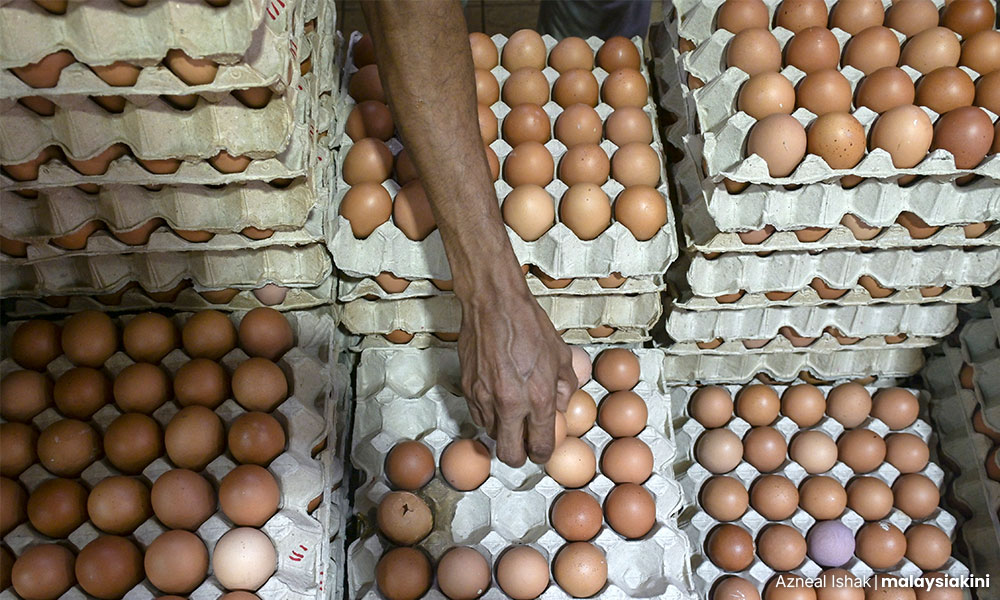LETTER | Add more specifics to the inflation figures, please
LETTER | When asked about how the Malaysian economy is doing, our government tends to use aggregate figures to explain that the economy is doing fine and “better than most Southeast Asian nations”.
Deputy Finance Minister Mohd Shahar Abdullah recently said higher possibility of inflation rates going up to 11.4 percent had the government not intervened by means of price control measures and subsidies.
The current inflation rate is at 3.4 percent, as reported by the Department of Statistics Malaysia (DOSM).
However, the inflation rate is an aggregate sum, calculated to reflect the whole situation of the economy in general terms rather than specific conditions.
One must understand that not everyone participates in every sector of the economy and inflation in certain areas will severely affect and increase the cost of living.
Those who pay attention to price hikes, especially in volatile areas such as food and beverages, restaurant prices and transportation costs will find that the price hikes are much higher, with increases ranging from 10 percent to 30 percent.

For example, a bag of potato chips formerly costing RM2.80 now costs RM3.30. A glass of teh tarik formerly costing RM2.00 now costs RM2.50.
And a set of chicken rice formerly costing RM5.00 now costs RM8.00, with the same amount of chicken.
Those are only the items that have fixed price tags. For highly fluid prices charged per service such as e-hailing services, the average price hike rates are hard to determine, but one thing is certain, they are much higher than what they used to cost.
The DOSM only reported a 6.1 percent increase in the food price index in June 2022 compared to the same period last year, which amounts to 29.5 percent of the consumer price index (CPI) used to measure the price increases of everyday necessities and expenses.
But the CPI only increased by 3.4 percent compared to last year. So how can the higher prices not be reflected in the indexes used to measure the price increases?
It is because the exact goods used in the index are not published in the DOSM's figures. This leaves much room for vagueness and doubts about the method of measurement to report inflation rates.
Tackling inflation needs transparency
In my view, the inflation rates around us can be potentially higher than what the government figures report.
Inflation in the manufacturing sector is much higher. The producer price index (PPI), measuring the total cost of the production of goods, has gone up to 10.9%.
Should a higher PPI rate continue, these higher production costs will eventually be passed down to the consumer to avoid high losses, making future price hikes for consumer goods even higher.
If the government is satisfied with the seemingly low aggregate figures, this misjudgement may bring in the floodgates of even higher inflation.
As we can see here, blindly citing inflation in the aggregate without given specifics is a major flaw in accessing and responding to Malaysia’s economic vulnerabilities.

The DOSM needs to be more transparent in publishing specific goods used to estimate inflation figures and publish reports on price movements.
The government must also specify the price conditions in various economic sectors so as to not bring a false measure of safety that inflation is under control everywhere.
As chicken prices have always come to attention due to poultry playing a crucial part in Malaysia’s food supply, other food prices such as rice, vegetables and fruits also have to be published and brought to proper attention so our food security can be estimated accurately with.
In the end, it all depends on whichever government is elected after the general election to address and explain to the matter to the population.
And they can start by not just reporting general figures of the economic indicators.
The views expressed here are those of the author/contributor and do not necessarily represent the views of Malaysiakini.
RM12.50 / month
- Unlimited access to award-winning journalism
- Comment and share your opinions on all our articles
- Gift interesting stories to your friends
- Tax deductable
